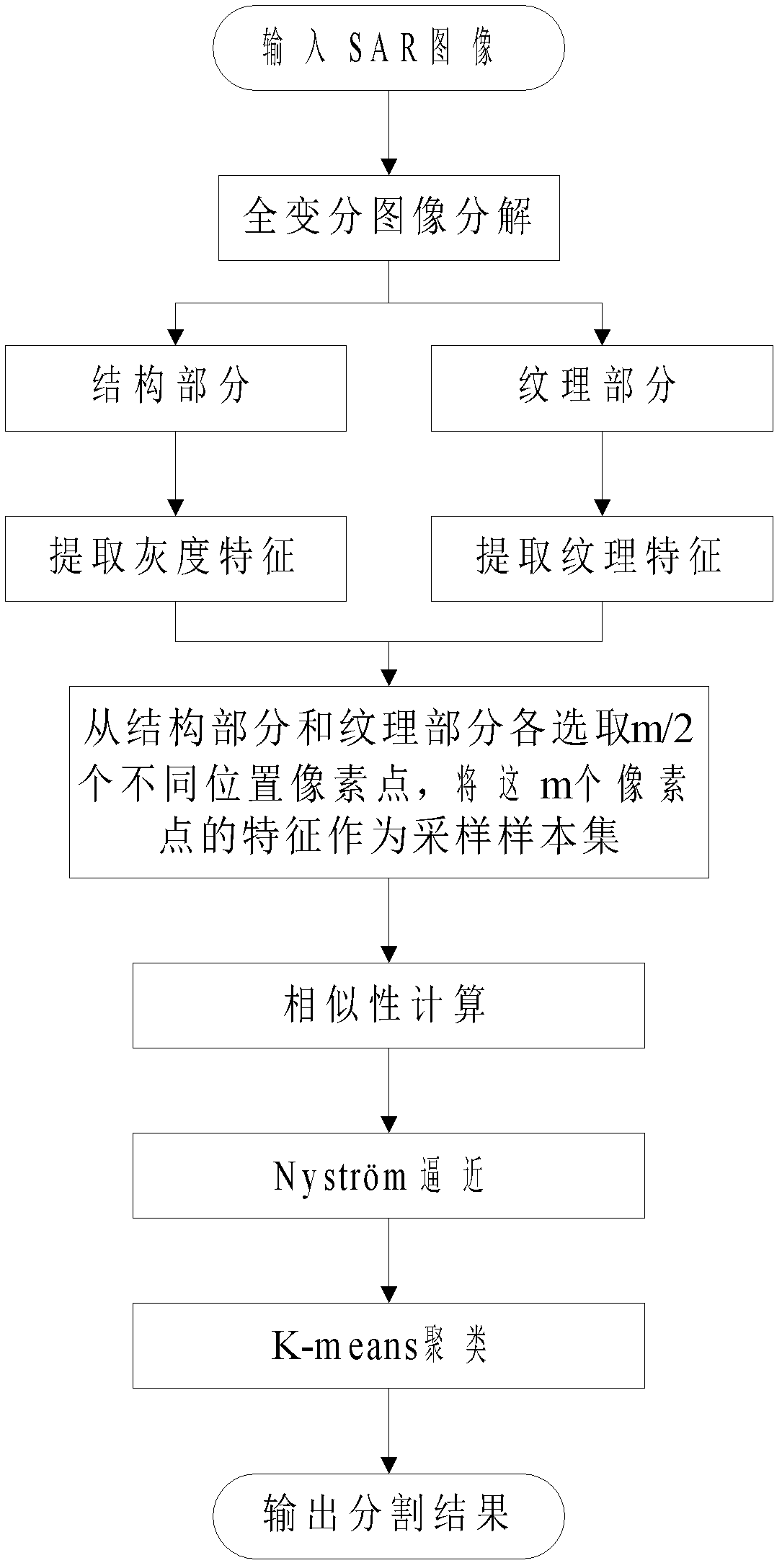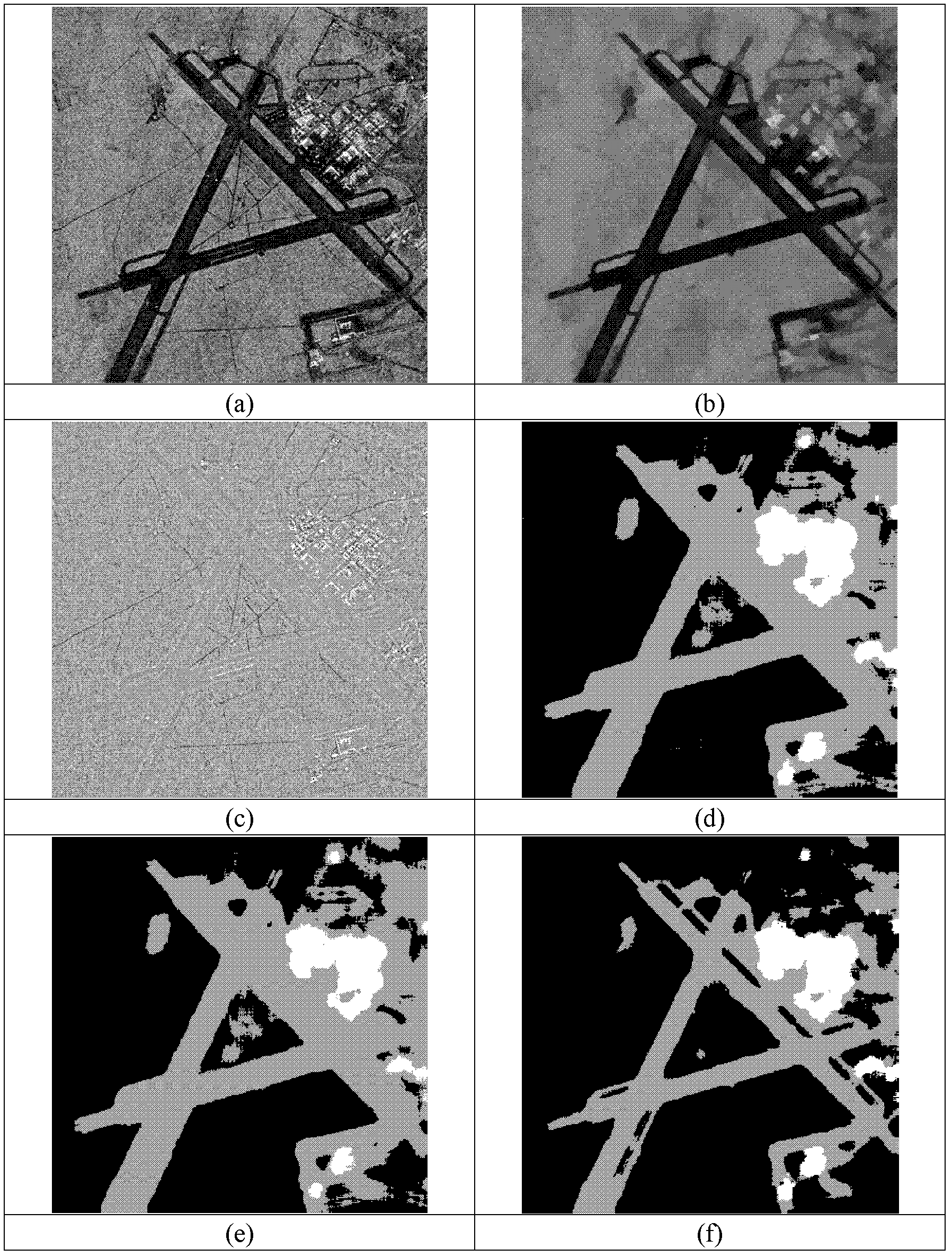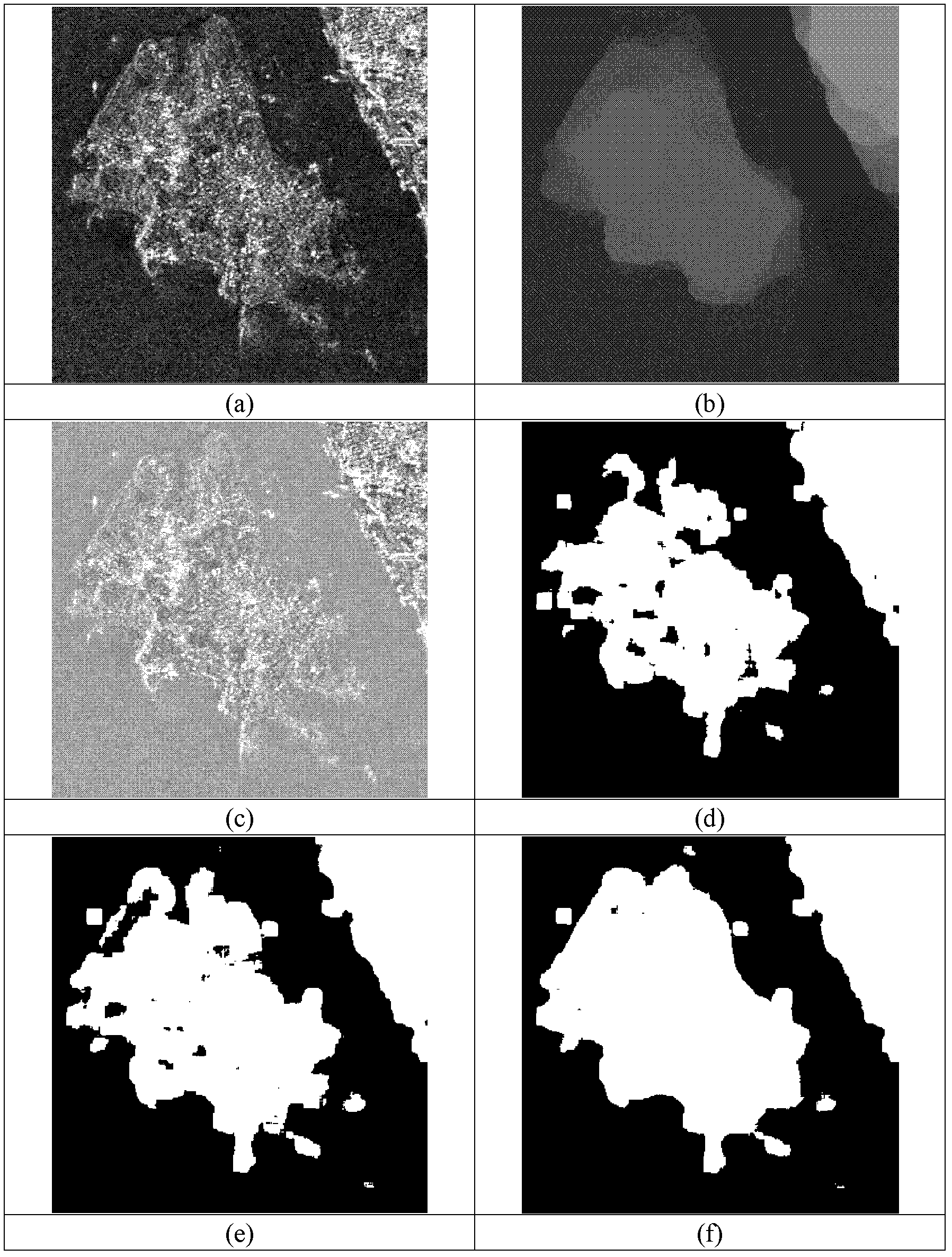SAR (synthetic aperture radar) image segmentation method based on total-variation spectral clustering
An image segmentation and full variation technology, applied in the field of image processing, can solve problems such as inability to obtain consistent and high-accuracy segmentation results, and rarely consider structural information, etc., to achieve good regional consistency and high accuracy.
- Summary
- Abstract
- Description
- Claims
- Application Information
AI Technical Summary
Problems solved by technology
Method used
Image
Examples
Embodiment Construction
[0025] refer to figure 1 , the specific implementation process of the present invention is as follows:
[0026] Step 1. Carry out full variational image decomposition on the input SAR image;
[0027] For the specific description of the total variational image decomposition algorithm, please refer to the article "PARAMETRIC MAXIMUM FLOW ALGORITHMS FOR FAST TOTAL VARIATION MINIMIZATION" published by D.Goldfarb and W.Yin et al. on Rice University CAAM Technical Report TR07 in 2007. According to this algorithm, the The SAR image is quickly decomposed into structure part and texture part.
[0028] Step 2. Extract corresponding features from the structural part and texture part obtained by the total variational image decomposition;
[0029] 2a) For the i-th pixel of the SAR image structure part, take its corresponding gray value G' i , and use the following formula to normalize to get the gray feature G of the i-th point i :
[0030] G i ...
PUM
 Login to View More
Login to View More Abstract
Description
Claims
Application Information
 Login to View More
Login to View More - R&D
- Intellectual Property
- Life Sciences
- Materials
- Tech Scout
- Unparalleled Data Quality
- Higher Quality Content
- 60% Fewer Hallucinations
Browse by: Latest US Patents, China's latest patents, Technical Efficacy Thesaurus, Application Domain, Technology Topic, Popular Technical Reports.
© 2025 PatSnap. All rights reserved.Legal|Privacy policy|Modern Slavery Act Transparency Statement|Sitemap|About US| Contact US: help@patsnap.com



